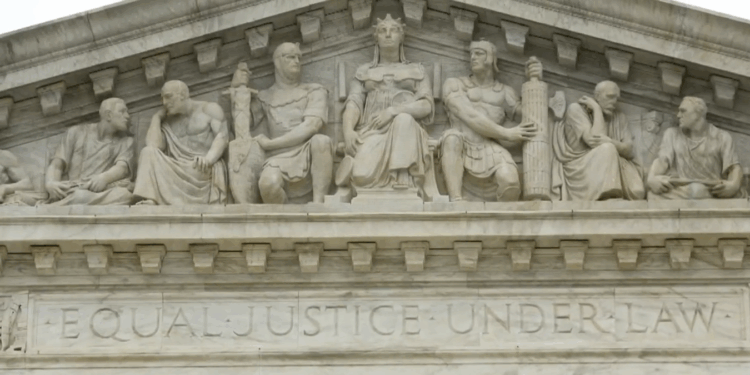The U.S. Supreme Court has agreed to issue a decision on a major election security issue related to mail-in ballots: should ballots be counted only until Election Day, or should ballots that trickle in days after an election be counted too? We know Election Day, set by Congress, is the Tuesday after the first Monday in November. But is that only the deadline for voting, with counting happening days later?
The case, Watson v. Republican National Committee (RNC), centers on a Mississippi complaint about a law allowing ballots postmarked on or before Election Day to be counted up to five business days after the election. It means ballots from a Tuesday election could arrive the following Tuesday and still be counted, as long as the post mark meets the criteria. The Libertarian Party of Mississippi filed a similar case. There are similar laws in some 30 states.
As The Federalist’s Elections Correspondent Brianna Lyman reported last year, “The RNC suit argues that Congress ‘established a uniform, national day to elect members of Congress and to appoint presidential electors’ but that ‘Mississippi contravenes those federal laws by counting mail-in ballots that are received up to five business days after Election Day.’”
The RNC said Mississippi essentially extends Election Day and mail “ballots that are counted for five additional days disproportionately break for Democrats.”
Like masks on preschoolers, mail-in ballots became prevalent during the Covid pandemic. Before Covid, most states held voting on Election Day, and the results were tallied after the polls closed.
During that time, Democrats were pushing for “no-excuse voting.” Those who were sick, out of town, or in the military had an excuse to request an absentee ballot, and the majority of people voted in person. Democrats promoted the no-excuse method before Covid, and tried to open mail-in voting for all.
The Covid era brought social distancing and the perfect excuse to usher in mail-in ballots for all. That is when drop boxes came on the scene, and the dates of a ballot’s post-mark and arrival at the county board of election became a debate. Election Day became Election Season, with parties tracking how many mail ballots their party members returned and adjusting their ground game accordingly.
“Many States have recently adopted post-election receipt of mail-in ballots,” the RNC wrote in a brief for the case. “These States risk ‘the chaos and suspicions of impropriety that can ensue if thousands of absentee ballots flow in after election day and potentially flip the results of an election.’”
The RNC argues that accepting ballots days after the election “deprive[s] the electorate of a clear nationwide deadline.”
With the 2026 midterm elections looming, election watchers are eager for a final answer on this question, but they will have to wait. Arguments are expected next year with a decision by late June or early July according to the SCOTUS Blog.
Beth Brelje is an elections correspondent for The Federalist. She is an award-winning investigative journalist with decades of media experience.















